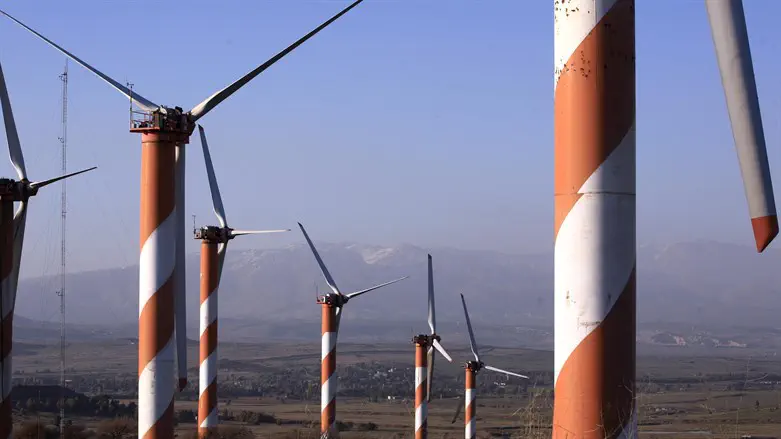
Researchers from Ariel University have conducted a study of wind speed statistics in the Samaria region of Israel and have found that the area holds potential for wind energy production.
The study analyzed 11 years of wind data provided by the Israeli Meteorological Service and found a cumulative mean wind speed of 4.53 m/s and a prevailing wind direction characterized by a cumulative mean azimuth of 226°.
The study's co-author, Professor Asher Yahalom from the Department of Electrical Engineering and Electronics at Ariel University explained that "we analyzed long-term wind data for the Samaria region and found that wind speeds were consistent and steady in an average sense, which is essential for wind energy production. Our findings show that the area has the potential for wind energy development, which could provide a valuable source of clean energy for the region."
The researchers extrapolated the data to estimate wind characteristics at the hub height of a medium-scale wind turbine and calculated Weibull distribution parameters annually, monthly, and seasonally. They found that the shape parameter of the Weibull distribution resided within a narrow range, allowing for the assumption of a Rayleigh distribution and simplifying wind turbine energy yield calculations.
Professor Yahalom noted that "these wind statistics for the Samaria region had not been previously published, and could be of interest for potential regional wind energy development, where the obtained Weibull distribution could be used in calculations for the expected power generation of particular turbines with a known power dependence on velocity. Our research provides valuable insights for energy planners and developers in Israel, highlighting the potential for wind energy production in the Samaria region."
The team included researchers from the Department of Electrical Engineering and Electronics at Ariel University, as well as the School of Electrical and Computer Engineering at Ben-Gurion University of the Negev and the Department of Economics at Hebrew University. The researchers analyzed data collected by the meteorological station located on the Ariel University campus in the eastern part of the city, which is situated at 700 meters above sea level.
The study included an analysis of three different types of turbines in terms of power generation and economic value as an example. The researchers found that the wind energy potential of Israel is restricted because of surplus moderate-to-poor wind velocity areas, which are limited to areas with sufficiently constant wind. Despite these limitations, the Israeli government has made efforts to promote the development of wind energy in the country.
Currently, Israel operates a single wind farm in Asanyia Hill in Golan Heights, with a total installed capacity of 6 MW. The farm consists of ten 600 kW turbines, which satisfy the consumption of about five thousand families. The wind farm operated around 97% of the time and yielded a revenue of approximately 1 million $ USD a year.
Israel has expressed a desire to add to the natural gases found in the country, which is a non-renewable local energy resource, by investing in green energy research and development. Wind energy has drawn the attention of energy initiatives in recent years. The country aims to bring two more wind farms with a 50 MW capacity into operation in the near future.
The findings of the Ariel University study provide important information for energy planners and developers in Israel and beyond, indicating that the Samaria region could hold significant potential for wind energy production. The researchers' work sheds light on the potential for wind energy development in the country, which could provide a valuable source of clean, renewable energy.
